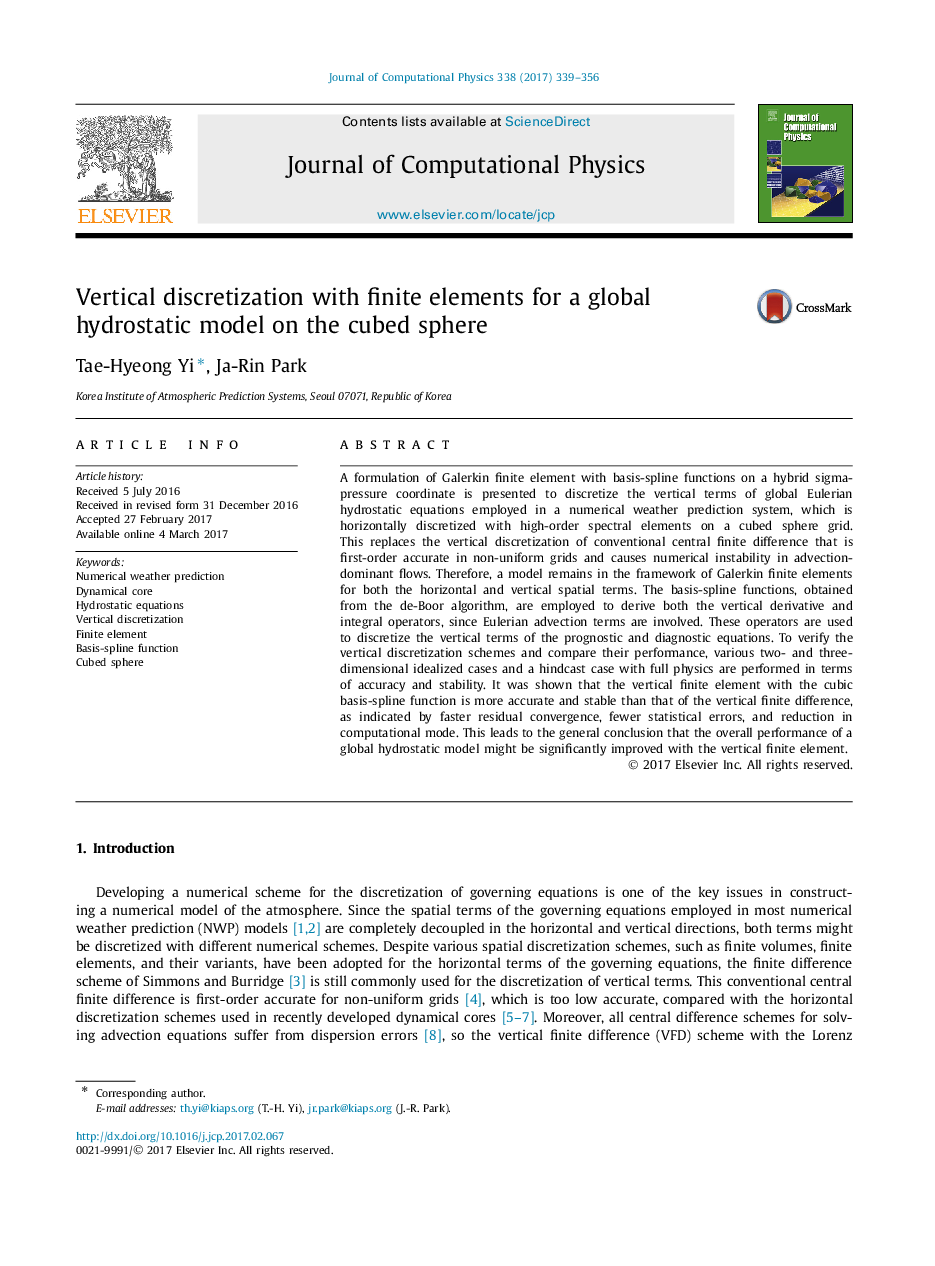| Article ID | Journal | Published Year | Pages | File Type |
|---|---|---|---|---|
| 4967495 | Journal of Computational Physics | 2017 | 18 Pages |
Abstract
A formulation of Galerkin finite element with basis-spline functions on a hybrid sigma-pressure coordinate is presented to discretize the vertical terms of global Eulerian hydrostatic equations employed in a numerical weather prediction system, which is horizontally discretized with high-order spectral elements on a cubed sphere grid. This replaces the vertical discretization of conventional central finite difference that is first-order accurate in non-uniform grids and causes numerical instability in advection-dominant flows. Therefore, a model remains in the framework of Galerkin finite elements for both the horizontal and vertical spatial terms. The basis-spline functions, obtained from the de-Boor algorithm, are employed to derive both the vertical derivative and integral operators, since Eulerian advection terms are involved. These operators are used to discretize the vertical terms of the prognostic and diagnostic equations. To verify the vertical discretization schemes and compare their performance, various two- and three-dimensional idealized cases and a hindcast case with full physics are performed in terms of accuracy and stability. It was shown that the vertical finite element with the cubic basis-spline function is more accurate and stable than that of the vertical finite difference, as indicated by faster residual convergence, fewer statistical errors, and reduction in computational mode. This leads to the general conclusion that the overall performance of a global hydrostatic model might be significantly improved with the vertical finite element.
Keywords
Related Topics
Physical Sciences and Engineering
Computer Science
Computer Science Applications
Authors
Tae-Hyeong Yi, Ja-Rin Park,
